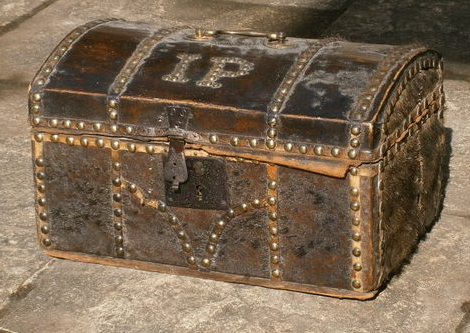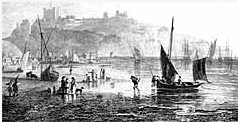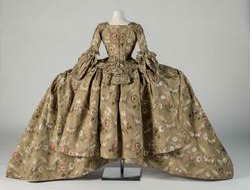 It’s now August — which for students, teachers, and professors signals impending fall and incites a desire to cram in as much end-of-summer activity as possible into the schedule. For us at Wonders & Marvels, we feel that same press; and the late summer inspires us with a certain kind of wanderlust. Our reading lists turn to travel and adventure, we plan last minute research trips and family vacations, and we grow nostalgic for the bright days of May.
It’s now August — which for students, teachers, and professors signals impending fall and incites a desire to cram in as much end-of-summer activity as possible into the schedule. For us at Wonders & Marvels, we feel that same press; and the late summer inspires us with a certain kind of wanderlust. Our reading lists turn to travel and adventure, we plan last minute research trips and family vacations, and we grow nostalgic for the bright days of May.
Highly likely our readers share this in common with us. And, because we are all part of the same curious community, it’s also likely that these rituals inspire similar questions. Questions such as
Where did people vacation in 18th century England? And why did they choose certain vacation spots?
The archives are chock full of information about travel from the period — from postcards, letters, and journal entries, to maps and brochures. Even contemporary novels were ready to satisfy English readers’ wanderlust. And while your class rank, income, and gender largely shaped the answers to the questions above, there were a couple of common trends for how individuals and families might plan their trips. Here, we take an admittedly brief glimpse into holiday travel from another time.
Educational Travel
Between the 16th and 18th centuries, The Grand Tour led elite young Englishmen out of London and into Continental cities such as Paris,  Munich, Amsterdam, Madrid, Prague, and Vienna. Aimed at helping young men to “broaden [their] education, mark the end of childhood, and acquire and hone social graces,” such tours were also an opportunity for families to display wealth and solidify political and economic reputations beyond England, as their sons might be abroad anywhere from one to five years (1).
Munich, Amsterdam, Madrid, Prague, and Vienna. Aimed at helping young men to “broaden [their] education, mark the end of childhood, and acquire and hone social graces,” such tours were also an opportunity for families to display wealth and solidify political and economic reputations beyond England, as their sons might be abroad anywhere from one to five years (1).
While a young man’s Tour would differ based on the educational plan set forth for him, the first step would be a crossing from Dover to Calais. The distance of approximately 83 kilometers could take anywhere from 3 to 12 hours to cross by ferry or packet ship, depending on weather and water conditions (2). What’s more, departing or arriving at port was made dangerous by shallow, rocky waters and a lack of landings — which required travelers to disembark their ships (luggage and all) using small row boats.
Restorative Travel
Travel for health was also popular and common during the period, with the fashionable English choosing spa and sea-batching destinations such as Bath or Brighton.
 While the thermal waters of Bath made it recommendable to those suffering from a variety of health problems (including gout), its popularity as a vacation spot also stemmed from its architecture and related social calendar of balls, concerts, and exhibitions. Following its erection the 1706 (and later reconstruction in 1795), the town’s Pump Room became host to assemblies, defined generally by the meeting “of polite persons of both sexes for the sake of conversation, gallantry, news and play” (3). Such gatherings provided lush spectacle, as women paraded in their finest in view of other elite visitors.
While the thermal waters of Bath made it recommendable to those suffering from a variety of health problems (including gout), its popularity as a vacation spot also stemmed from its architecture and related social calendar of balls, concerts, and exhibitions. Following its erection the 1706 (and later reconstruction in 1795), the town’s Pump Room became host to assemblies, defined generally by the meeting “of polite persons of both sexes for the sake of conversation, gallantry, news and play” (3). Such gatherings provided lush spectacle, as women paraded in their finest in view of other elite visitors.
For the wealthy at least, transit to Bath involved carriage rides across a system of roads made dangerous by highwaymen who lay in wait for wealthy passengers. Carriages might range from private chariots, chases, and gigs to the more common and larger sized for-hire Royal Mail Coach or stage coach.
Sources:
(1) Ueli Gyer, “The History of Tourism: Structures on the Path to Modernity,” European History Online 3 Dec 2010.
(2) “The Grand Tour,” Georgian Index May 2011.
(3) “Georgians: Dress for Polite Society,” Fashion Museum, Bath & Northeast Somerset Council 2014.
